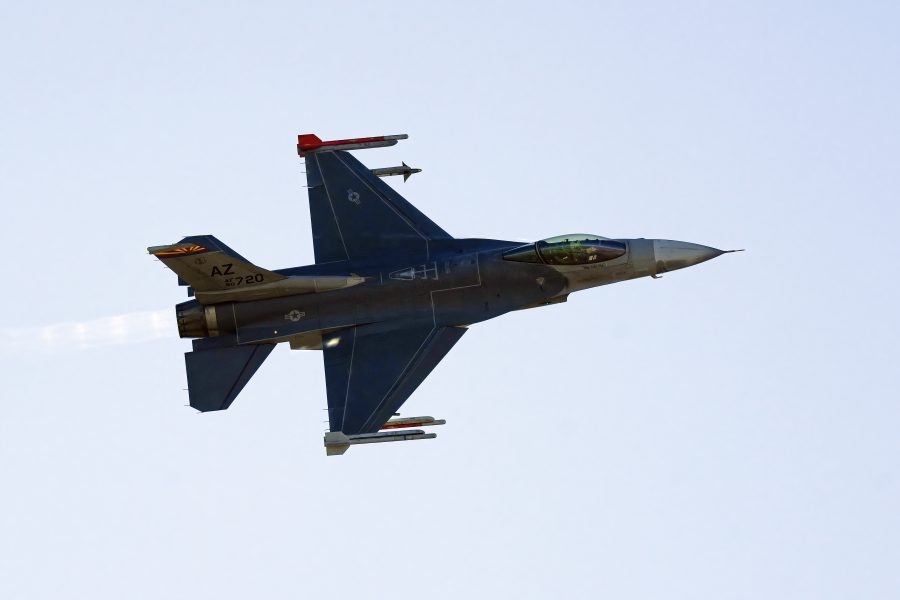The first four Ukrainian pilots training to fly the F-16 at Morris Air National Guard Base, Ariz., are “on track,” the head of the National Guard Bureau said Feb. 8, and the first batch of pilots are funded to complete their schooling. But Gen. Daniel R. Hokanson told the Pentagon press that Congress must authorize more funding to add additional pilots to the training queue.
Ukrainian pilots arrived in the U.S. to train to fly F-16s in September, first at Lackland Air Force Base, Texas, for a crash course in English, and then beginning in October at Morris Air National Guard Base, Ariz., home of the 162nd Wing, where the day-to-day mission is focused on training foreign pilots to fly F-16s.
The U.S. and its allies expect the Ukrainian Air Force to achieve initial operating capability with its F-16s by the end of 2024, according to Assistant Secretary of Defense for International Security Affairs Celeste Wallander, who said pilot training was on track.
Hokanson echoed Wallander’s assessment, but added the caveat that without additional funding, things could change in the coming months.
“Everything we see right now, they’re on track,” Hokanson said. “Obviously as we get further on to higher levels, they may be more advanced or less. But we look at each pilot individually, because what we want to do is prepare them, as much as possible before they go back to Ukraine, to be successful.”
Pilots at Morris complete the six-month “B Course”—or Basic Course—to become proficient in the fundamentals necessary to transition to the F-16. That is the course the four Ukrainian pilots are now undergoing, a defense official previously told Air & Space Forces Magazine.
Hokanson’s senior enlisted advisor, Air Force CMSgt. Tony L. Whitehead added that maintainers currently being trained on the F-16 will get resources to help them over the long term.
“Our standard operating procedures and [operating instructions] are translated for those maintainers, so they can make sure that the continuity of training can continue when they go back to Ukraine,” he said.
Such resources will likely be crucial, as officials and observers alike have noted that maintaining F-16s inside of Ukraine will represent a major effort in and of itself.
Building out a corps of F-16 pilots and maintainers takes time, though, and while Ukrainian personnel are also training in Denmark, the possibility of expanding training in the U.S. appears unclear.
“We do have the resources to continue the training that has already started … and hopefully get all of those folks completed later on this year,” Hokanson said. “Then if we decide to increase that, then obviously we’ll need the resources to train additional pilots and ground support personnel.”
Hokanson did not specify where such resources would come from, but lawmakers in Congress are currently locked in a heated debate on Ukraine funding. On Feb. 8, the Senate took a procedural step to advance a massive foreign security aid package that includes $95 billion for Ukraine, Israel, Taiwan, and more. However, that bill’s fate remains uncertain in the House. Lawmakers must also pass a budget for the federal government by early March or risk a shutdown.
Previously approved funding for Ukraine ran out in late January.
